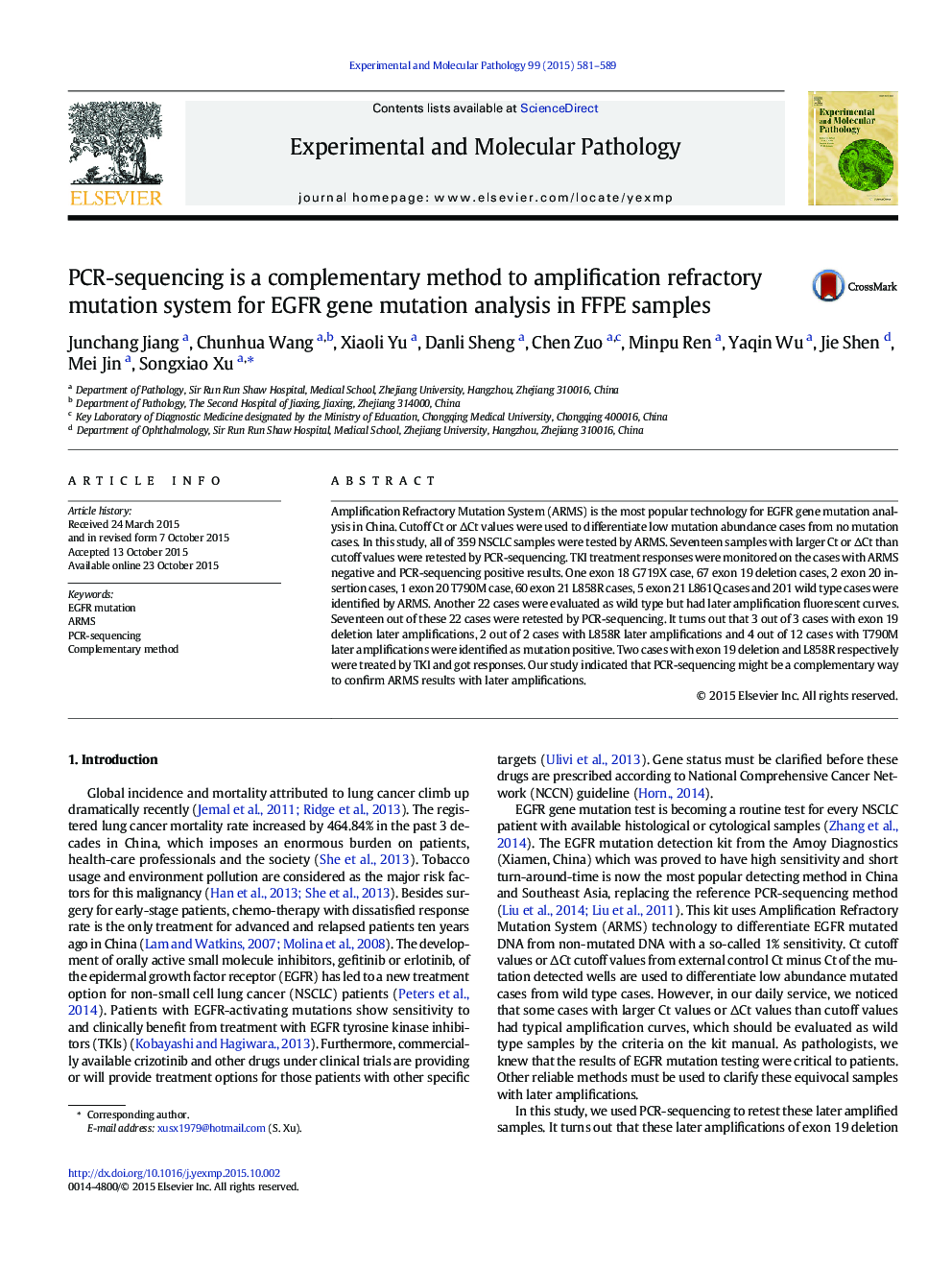| Article ID | Journal | Published Year | Pages | File Type |
|---|---|---|---|---|
| 2774899 | Experimental and Molecular Pathology | 2015 | 9 Pages |
Amplification Refractory Mutation System (ARMS) is the most popular technology for EGFR gene mutation analysis in China. Cutoff Ct or ΔCt values were used to differentiate low mutation abundance cases from no mutation cases. In this study, all of 359 NSCLC samples were tested by ARMS. Seventeen samples with larger Ct or ΔCt than cutoff values were retested by PCR-sequencing. TKI treatment responses were monitored on the cases with ARMS negative and PCR-sequencing positive results. One exon 18 G719X case, 67 exon 19 deletion cases, 2 exon 20 insertion cases, 1 exon 20 T790M case, 60 exon 21 L858R cases, 5 exon 21 L861Q cases and 201 wild type cases were identified by ARMS. Another 22 cases were evaluated as wild type but had later amplification fluorescent curves. Seventeen out of these 22 cases were retested by PCR-sequencing. It turns out that 3 out of 3 cases with exon 19 deletion later amplifications, 2 out of 2 cases with L858R later amplifications and 4 out of 12 cases with T790M later amplifications were identified as mutation positive. Two cases with exon 19 deletion and L858R respectively were treated by TKI and got responses. Our study indicated that PCR-sequencing might be a complementary way to confirm ARMS results with later amplifications.
